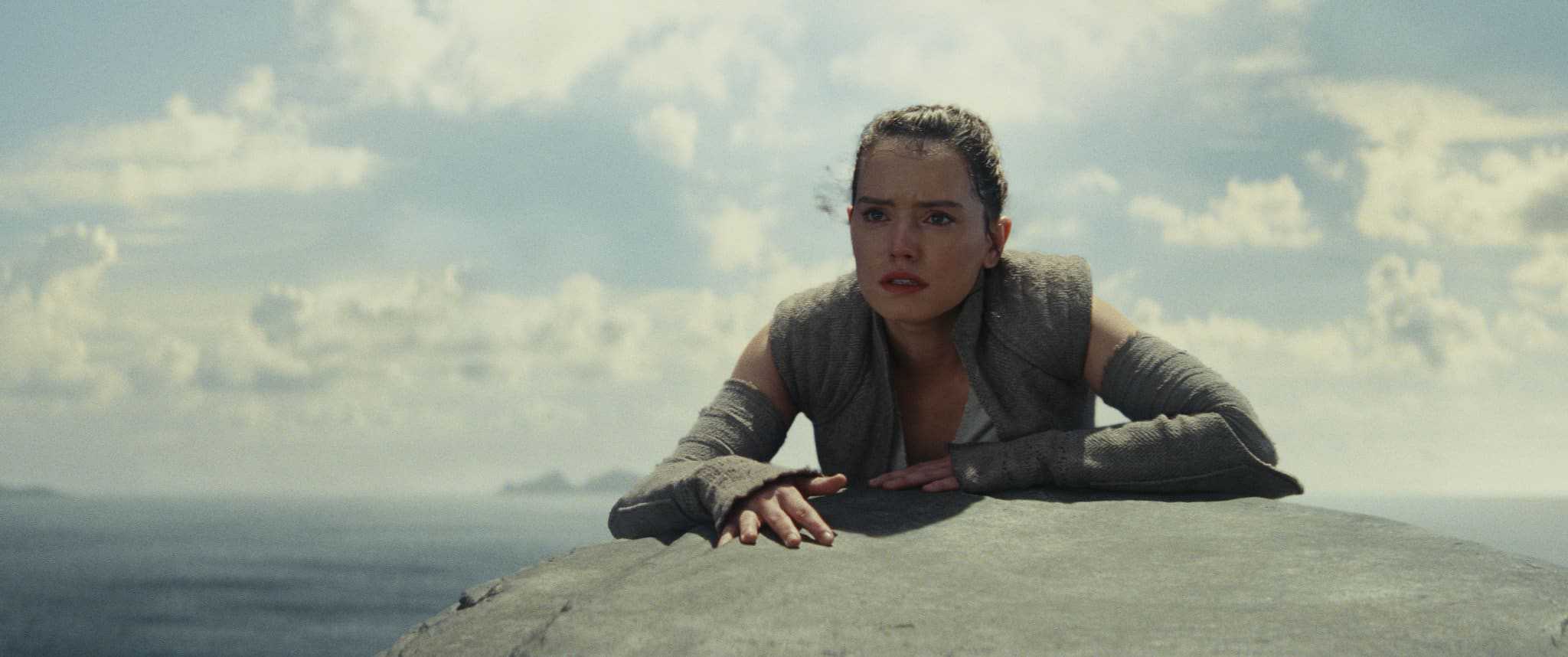
John Williams’ score for ‘The Last Jedi’ is as dynamic and different as the movie itself.
“We are what they grow beyond” states a character in Star Wars: The Last Jedi, and while that may strike true about masters and apprentices it doesn’t apply to the absolute core of the saga – the music of John Williams. Despite this his score for the eighth instalment in the series has been somewhat divisive, so let’s explore further as to why that may be while we examine the musical highlights of The Last Jedi, not to mention some of the aural easter eggs that have been placed in the mix by Williams and director Rian Johnson.
The main reason John Williams’ scores for Star Wars work so well is because of his knack for writing themes that stick with us in the service of leitmotif. Popularised by Richard Wagner when he was writing operas, leitmotif is the technique where the musical narrative is supported through the assigning of themes and motifs to story elements, usually characters. These themes are then repeated to help tell the story musically. So whenever Luke Skywalker does something heroic, his theme sounds, or when Han Solo kisses Princess Leia, we hear their love theme, and so on. Some commenters have expressed unhappiness at the “lack of themes” in The Last Jedi, so let’s take a look at what’s been presented thematically in the score.
There are three new themes appearing in The Last Jedi, along with a handful of pieces that repeat stylistically. The most prominent of these is Rose’s theme, a wonderfully spirited melody that matches the optimism and drive of Kelly Marie Tran’s character (as heard below at 0:11). The second is a new theme for Luke’s exile on the island Ahch-To, an eleven-note phrase that ascends and descends to mirror Luke’s journey as a Jedi (at 1:20), while the third is a longer-lined melody for the desperate Resistance movement as they run from the First Order, reflecting their spirit and their struggle (You can hear this at 6:15 in ‘Main Title and Escape’). Now where this differs somewhat from previous films is that, other than Rose, these are ostensibly secondary themes. Luke’s theme, as a lot of you will know, is the saga’s main title, and the Resistance received a triumphant march in The Force Awakens. Both of these themes receive play in The Last Jedi.
Indeed, with the saga now up to eight films, Williams has a veritable candy store full of themes to pick from. Recently, Frank Lehman – a musicologist and assistant professor at Massachusetts’ Tufts University – finished a catalogue of themes and motifs from the saga and counted a huge fifty-five individual themes, including the three above from The Last Jedi. That’s a gigantic body of work to draw from, and because of this, plus Williams’ evolution as a composer, it’s a different situation from something like The Empire Strikes Back, which I’ve seen people negatively compare his latest score to. Famously, that score introduced three of the most popular themes of the saga; The Imperial March, Yoda’s theme, and the Han and Leia love theme. But what you have to remember is that Vader didn’t really have a theme previously and was not even the main villain in the first film, Yoda was a brand new character, and the love story was a major part of the story.
In the case of The Last Jedi, there is no love story to score, and the principal characters such as Rey, Kylo Ren, and even Poe Dameron all had themes introduced in the previous film (Kylo Ren technically has three), along with Luke, Leia, et al who have had indelible themes since 1977. Dramatically the action centres on Luke, Rey, and Kylo, so Williams is hardly going to ditch those for the sake of writing new themes, especially when the success of his scores has rested so much on how well these themes have resonated with moviegoers for decades. However, in the case of Rey, The Last Jedi does hold similarities with the beloved The Empire Strikes Back other than being the middle chapter in the trilogy, namely the treatment of her theme. In Empire, Luke’s theme is reprised fairly often, but during the Dagobah section of the film only the opening of the theme is used, and often in a minor key to indicate Luke’s failure, whether it’s crashing his X-Wing or fighting his demons in the cave. In The Last Jedi, Rey’s theme is treated similarly, either played in a more downbeat way or even left unresolved, with snippets rather than the full phrasing.
What’s interesting is that instead of failure this is more a case of disillusionment with Luke and her expectations of him as a Jedi master and the reality, one of the major themes of the film. Both Luke and Rey leave their training in somewhat of a panic, and both of their themes get more of a heroic treatment once they’re on their way, Luke when he leaves for Bespin and Rey as she’s delivered to the Supremacy. Curiously, during the sequence where Rey explores the tree on Ahch-To, Williams makes some sneaky allusions to the magic cave scene in Empire (funnily enough, on the soundtrack it’s known as ‘The Magic Tree’). With the film identifying the usefulness of failure as a tool for growing, Luke’s confrontation of his failure on Crait leads to a major return of the Force theme, something which is now being applied to Rey and her success at saving the remainder of the Resistance, where the question of exactly who the film’s title refers to is answered, with a large rendition of the theme as we cut to Rey and her miraculous moving of the rocks, Williams using a veneer of her theme together with what was in 1977 called Ben Kenobi’s Theme.
The wondrous choral piece that follows, with the music as speechless at Rey’s feat as she is, is one of the highlights of the score, which itself often explodes in a shower of harmonic expressiveness from Williams’ deft touch. The emotion required from the score is often overwhelming, be it from actual character scenes or the film’s sad undercurrent from the passing of Carrie Fisher. Leia’s theme has always had a touch of melancholy behind the strength of the character, and both are on display here in the sequence where her ship is attacked and she finds herself adrift in space. As she initially senses Kylo in his fighter and he senses her back, Williams uses an ethereal minor rendition of her theme that seems to want to push the audience to shout at the screen “don’t do it!” although, unfortunately for him and her, someone else does. The theme returns on delicate piano as she floats amongst the debris before it gives way to the Force theme as she’s able to use its power, and here Williams uses a beautiful section of the concert suite of her theme as she pulls herself towards the ship before ending with the Force as we collectively breathe a sight of relief.
A similar experience comes from the scene where she is reunited with Luke through one of Williams’ lesser-recognised themes, Luke and Leia from Return of the Jedi. It’s a theme that has a sense of melancholy and maturity, composed for a meeting of the pair that Luke thought would be their last, and here it takes on a further power for what again supposes that this is the last time they’ll see each other. It’s a moment that makes your heart break, brother and sister at the end with a theme ensconced in a beautiful sadness. While emotional in a different fashion perhaps, Rose’s theme makes some great appearances, especially in the scene where they steal the fathiers. The action cue for the sequence is great, with swirling figures emphasising the movement of the animals, but it’s the appearance of Rose’s theme where it shines, with her riding one across the beach in the moonlight to a beautiful explosion of brass, having been the instigator of their release.
Canto Bight itself features some of Williams’ best diegetic music since the original film, with a hysterical opening cue for the casino, followed by another that seems to be a homage to the second Cantina cue from Star Wars. What’s great about the sequences is the little easter eggs that Rian Johnson and Williams inserted, in probably the only place they could get away with it. Appearing at one point or another is the catchy masterpiece that is ‘Aquarela do Brasil’ by Ary Barroso, best known to film fans from Terry Gilliam’s Brazil, as well as the teaser trailer for Wall-E. Also in there is an older piece by Williams himself, ‘The Long Goodbye’, which is from Robert Altman’s film of the same name (hilariously, the song is an in-joke in that film too, showing up all over the film from a love song to supermarket muzak).
There are also several little callbacks to themes and cues from previous films in the saga that are somewhat delightful, such as a solitary appearance of The Imperial March during Kylo Ren’s performance review, the Emperor’s theme when Rey is being tortured by Snoke, and the famous Rebel fanfare dominated-action piece from the Millennium Falcon‘s escape from the Death Star, popularly known as ‘Here They Come!’. The reprise comes as the Falcon speeds through the crystal caves of Crait in a scene reminiscent of the race through the superstructure of the second Death Star, a scene which – surprise, surprise – featured a reprise of ‘Here They Come!’. Johnson actually mentioned this on Twitter, stating “He [Williams] REALLY dug into manipulating the established themes”.
And of course, one of the final acts in the film is the passing of Luke into the Force. There’s a beautiful sense of symmetry in his final scene with Ahch-To’s own twin sunset, and the only real option is to reprise the theme that played when he first looked out at the suns on Tatooine. Williams reprises it with gusto, but knows he doesn’t have to overplay it with the already emotional height of the scene, and instead of the suns setting on his dreams, this time they set on his life that we’ve followed, finally cementing the legend of Luke Skywalker. But in a galaxy where your peers still exist as spirits in the Force, death is but a backflip away.
Luckily for the Force and ourselves, John Williams has already said he wants to finish the trilogy with J. J. Abrams’ Episode IX. But with that nearly two years away it leaves us plenty of time to listen to The Last Jedi. Williams has composed a complex and dense score full of emotional fraughtness and questions of faith and spirit. It deserves to be listened to multiple times, and almost demands further dissection and appreciation, being another sparkling addition to one of the greatest examples of long-form modern musical storytelling. A force to be treasured.
Related Topics: John Williams, Music, Star Wars, Star Wars: The Last Jedi

